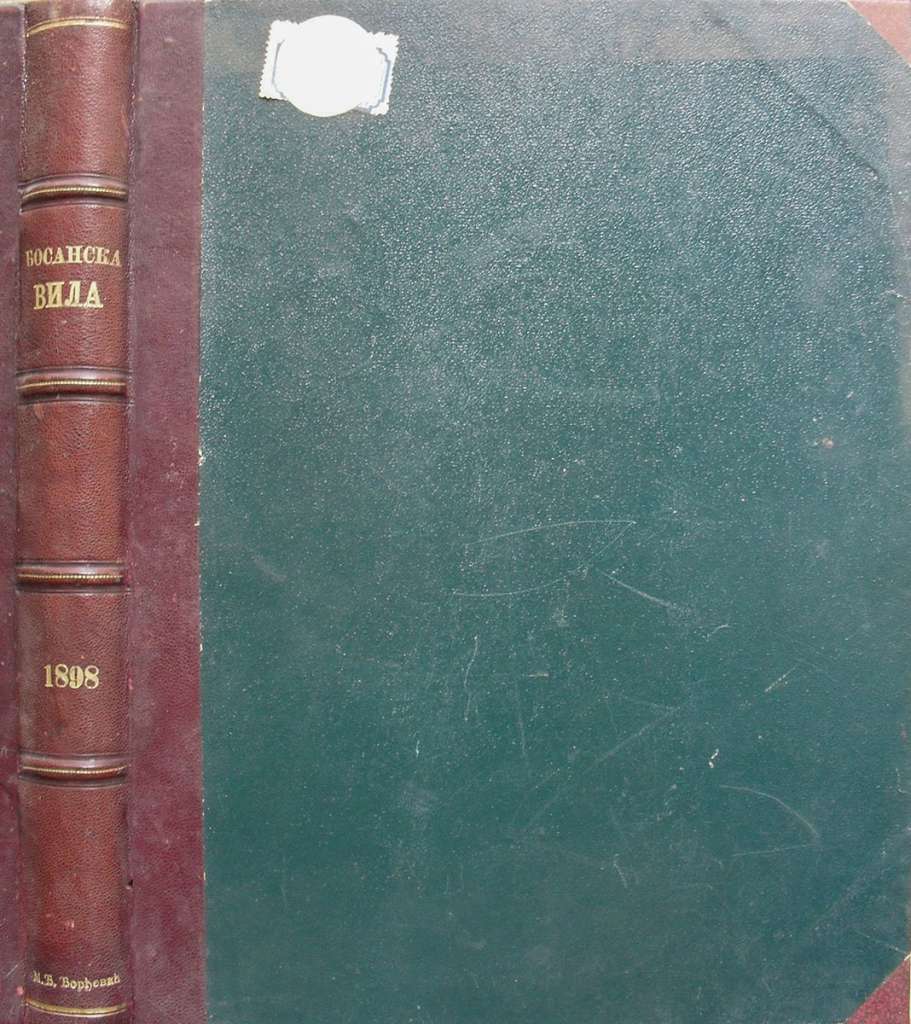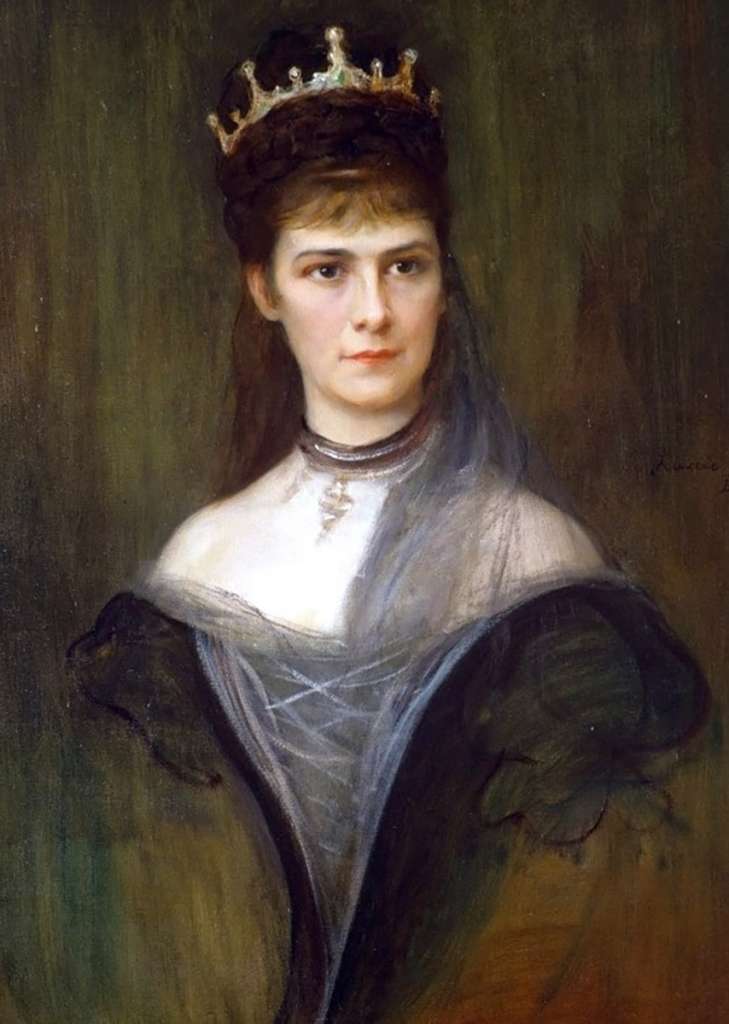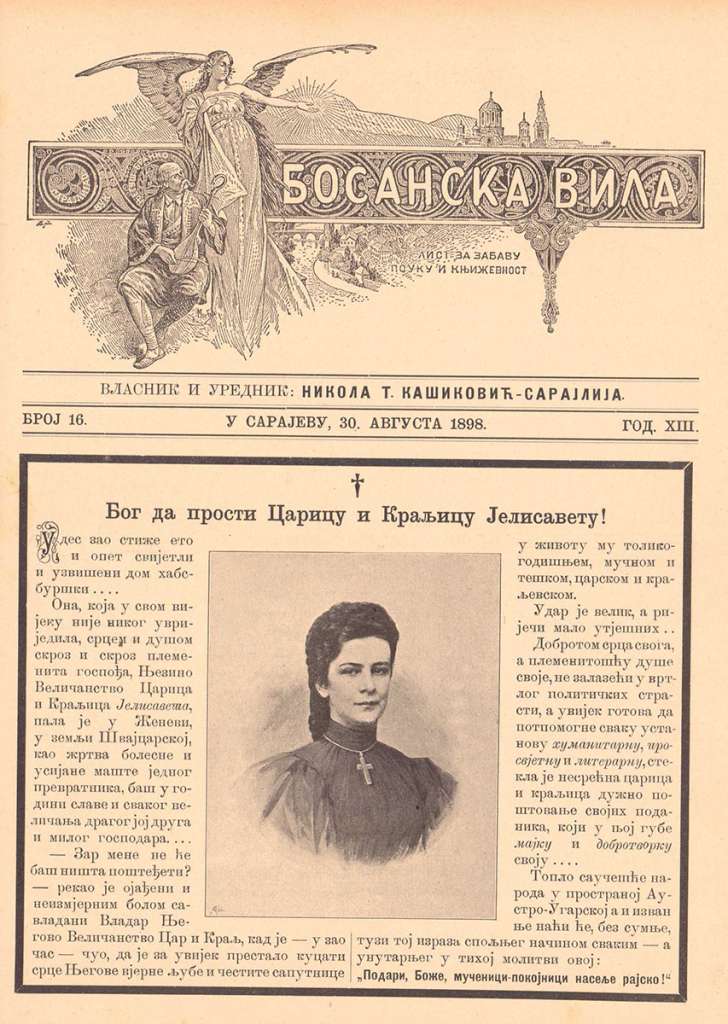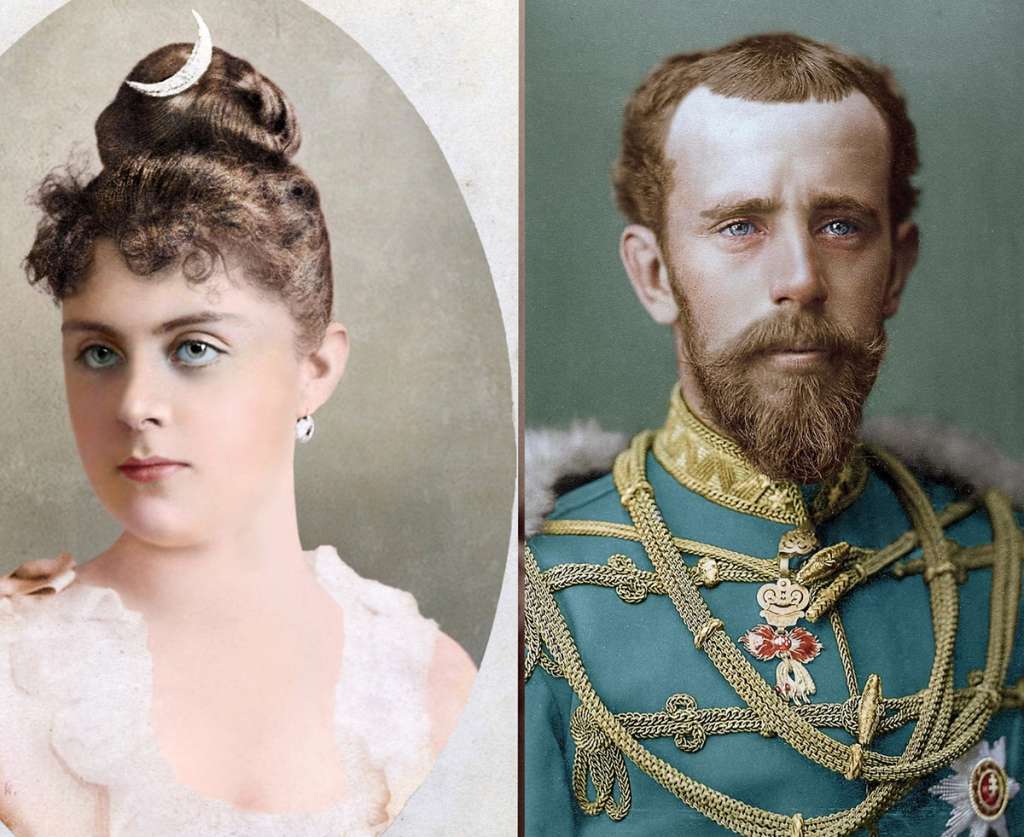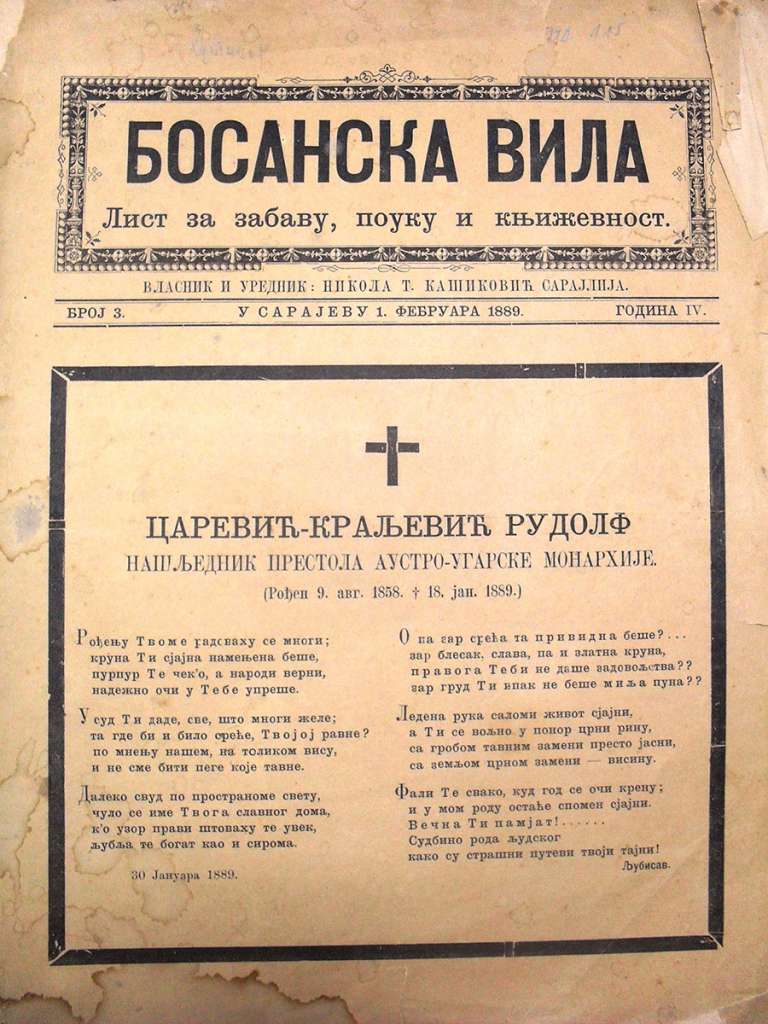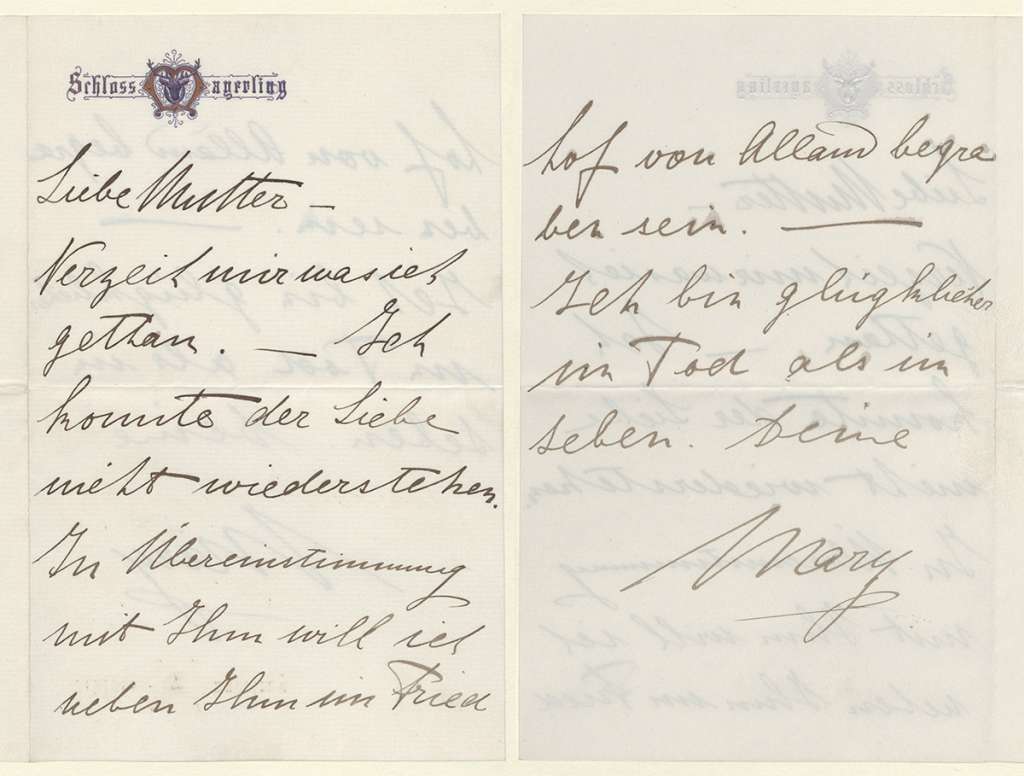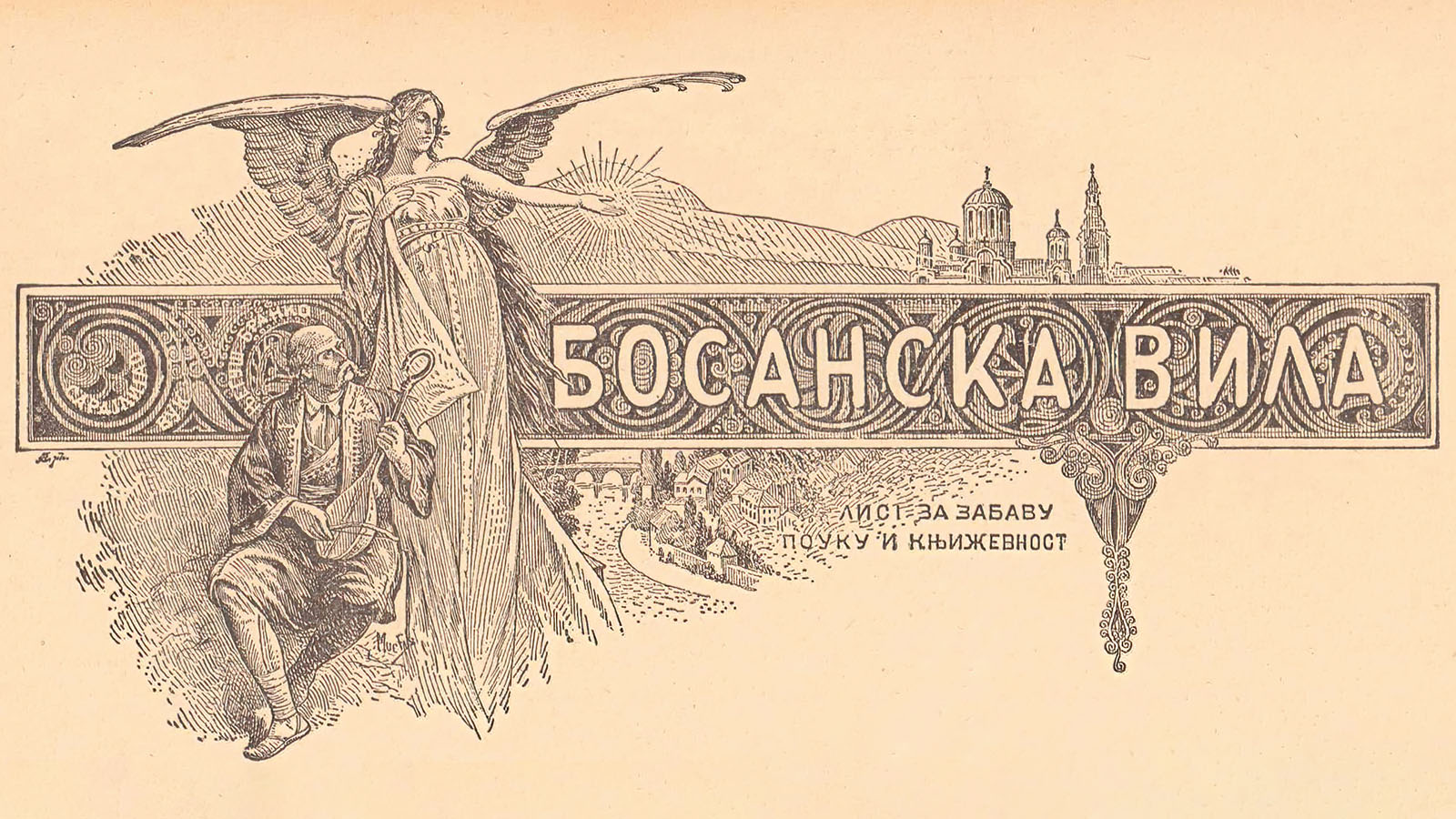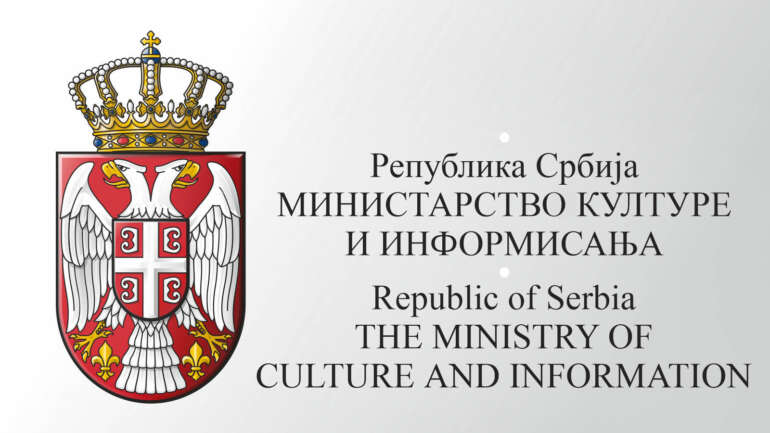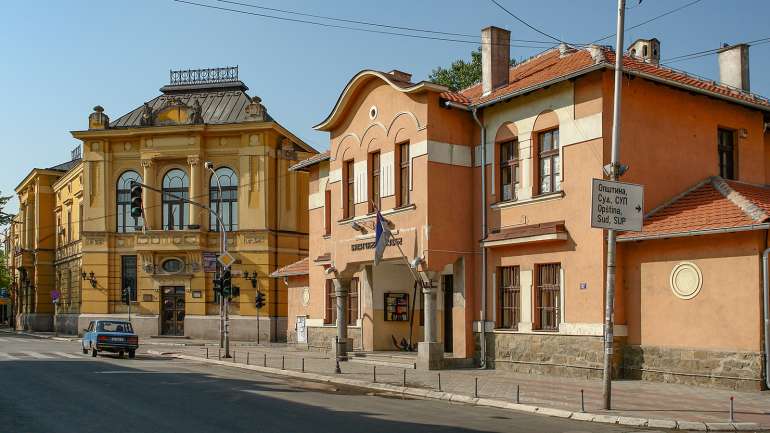By: Branislav Cvetković, museum advisor
The Collection of old and rare books in our Museum also contains a sub-collection of rare periodicals, in which the magazine “Bosanska vila”, a newspaper for entertainment, education and literature, which was published in Sarajevo between 1885 and 1914, occupies a special place. The magazine was started by scholars and teachers of the Serbian School, among whom Nikola Šumonja, Božidar Nikašinović, Stevo Kaluđerčić and Nikola Kašiković stood out, and the last of them would later be the main editor and owner of the paper for many years until it was abolished by the decision of the Austro-Hungarian authorities at the beginning of the I WW.
In the museum collection, 15 special issues and 7 complete bound years are kept. The related specimens belonged to Marko Đ. Đorđević, the son of the banker Đorđe and Lenka Đorđević from Jagodina, as evidenced by Marko’s name printed in gold in the lower part of the leather spine. Bearing in mind that Marko was born in 1879, he owned the volumes of this magazine as a boy, and many other copies of the collection, also once in his possession, show that he was devoted to reading. Among the issues from 1898, attention is drawn to a short biographical text dedicated to Empress Elisabeth (1837–1898), the wife of Habsburg Emperor Franz Joseph. A television series entitled “Sisi” (which was her nickname) was filmed about her unusual life, which Serbian audiences could also watch in the past months. This Austrian empress, Hungarian queen and originally German princess was considered the most beautiful woman of her time, as evidenced by a series of painted portraits and photographs of her. She was a great traveler, she rarely stayed in Vienna, and she had her own castle, “Achellion”, in Corfu. Introductory article in “Bosanska Villa” no. 16 of August 30, 1898 actually records her tragic death – she was assassinated on September 10, 1898 while walking along Lake Geneva by the Italian anarchist Luigi Lucheni.
The opening words of the article state that the Habsburg court once again faced a bad fate because barely a decade earlier the Empress had lost her only son and heir to the crown. It was a double suicide in the imperial hunting castle Mayerling in the Vienna Forest, which was also dramatized by the film industry. Prince Rudolf, born in 1858, and his seventeen-year-old lover Baroness Maria von Vetsera committed suicide in Mayerling on January 30, 1889. The Empress, often melancholic and prone to depressive episodes, never recovered from this tragic event. The event itself was recorded on the front page of “Bosanska vila” no. 3 of February 1, 1889 (the oldest issue in our museum collection) where a certain Ljubisav had published a verse review on the martyred Prince. Today, in Mayerling, where there is a Carmelite monastery along with the hunting castle, there is a museum exhibit dedicated to the tragic event, as well as a modern website that provides information about the subsequently found letters of the Baroness. Her short letter with the Mayerling Castle memo says she was “happier in death than in life”…
